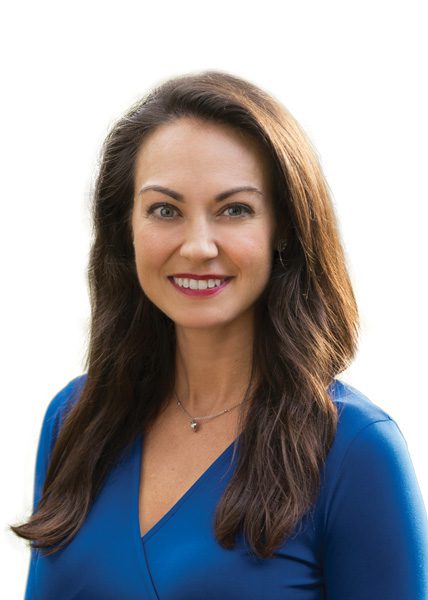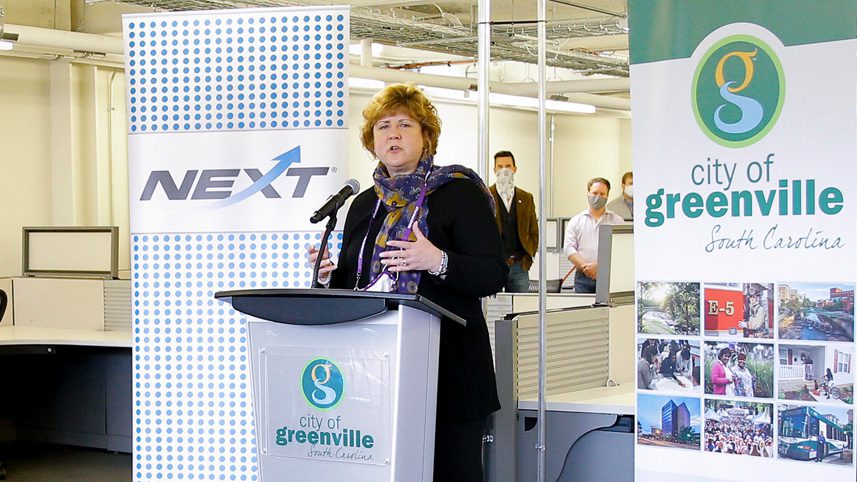
Q&A with Courtney Tollison ’99
 Furman Distinguished University Public Historian and Scholar Courtney Tollison ’99 serves on the university’s Task Force on Slavery and Justice.
Furman Distinguished University Public Historian and Scholar Courtney Tollison ’99 serves on the university’s Task Force on Slavery and Justice.
The Furman University Board of Trustees approved a host of recommendations from the “Seeking Abraham” report that makes changes to Furman’s campus, including the completion of the Joseph Vaughn Plaza. What is the power of these campus changes?
CT: By perusing any landscape, whether it be a city’s downtown, a neighborhood or a campus, we can gauge a community’s identity and values; landscapes are a community’s self-image. Who and what are honored by its statues, plazas, street names, gardens and buildings not only reveals but punctuates that community’s ideals. We communicate so much through these landmarks, which result from thoughtful and deliberate processes that reveal who we are and what we value.
I believe fervently that the changes we have made at Furman, tangibly and otherwise, really matter.
As a Furman professor and alumna, what does it mean to you personally to be involved in this work through the Task Force on Slavery and Justice?
CT: I began researching the desegregation of Furman and the life of Joe Vaughn when I was a senior at Furman, over 20 years ago. History professors Steve O’Neill ’82, Marian Strobel and Diane Vecchio sparked a passion I didn’t even know I had. Ever since, I’ve spent significant time preserving, interpreting and presenting the university’s nearly 200-year history.
I’m so honored to have served on the task force and the subcommittees that followed and to remain involved in the implementation of these efforts. It has been highly rewarding to write new plaques for Furman Hall, Clark Murphy Housing Complex, Joseph Vaughn Plaza and Cherrydale. Alongside University Communications, I also recently finished updating and enhancing the university’s interactive, web-based timeline. It and the additions to the campus landscape present a more inclusive history that more accurately reflects Furman’s values today.
Some of us involved with the task force developed relationships with those who are attempting to undertake similar efforts at other institutions, and many of them have encountered strong resistance. I’m grateful for the overwhelming support that Furman administrators, trustees, faculty, staff, students and alumni have shown for our efforts.
I believe that, aside from teaching and the relationships I have with my current and former students, the task force and the implementation of its recommendations are likely the most important and meaningful contributions I’ll make to the university during my career.
With regard to the pandemic, what’s one lesson that you hope we will learn when we look back on it?
CT: So often, we look to the events of the past as a story with a foregone conclusion, and we think of ourselves as being so much more advanced and evolved. Yet, the past was not a foregone conclusion to those who lived through it any more than our present is for us. We think that somehow, unlike those who preceded us, we have evolved to a point where pandemics, threats to our government’s principles, and other harrowing events won’t happen to us. But as we have seen very recently, that isn’t the case.
I hope we have a deeper understanding of and an increased empathy for those who endured and resisted these threats. I hope it humanizes the past.
I usually begin classes by having students peruse a contemporary news article that is related to that day’s topic. I want them to see that the past is relevant to their lives. In spring 2020, I taught a public history seminar. In that class, we constantly seek ways to meaningfully present the past to the public.
Before spring break, I was in a conversation in which the person with whom I was speaking wished me a nice week off and said, “See you after the break, if we come back.” His statement took me by surprise, but as it turned out, we never reconvened in person.
Soon after the university announced that we would be gathering remotely for the rest of the semester, I began to think about how to put what I teach into practice. How could I make the class more germane, not only for the students, but for the public and those who will be writing about us 100 years from now? We had already discussed how “history,” in contrast to “the past,” was the study of events and people from the past, and represented scholars’ best attempts to construct an understanding of those events and people based on the sources available to us.
I changed most of the course assignments and responsibilities for the second half of the semester. I decided to scratch their final paper assignment in favor of having the students maintain pandemic journals. I encouraged them to write of the changes occurring in their lives and of the challenges and benefits introduced by the pandemic. I wanted them to include everything from the mundane ( complaints about tiring of eating at home with the same people for weeks on end, for instance) to the more substantial issues (the impact of both distance and inseparability on relationships with family, friends and significant others).
History is a construct based on the sources available to historians. Knowing that the more sources historians have available, the richer the history, I hope that scholars of the future who seek to understand us will find this archive highly useful in their efforts.
One other course adjustment turned out to be very illuminating. I’m currently completing a book manuscript on the impact of the Progressive Era and World War I on Greenville. In 2014, when I began writing the chapter on the 1918-1919 Spanish Influenza pandemic, few people were engaged with that history. When researching it, I actually thought about what a gold mine it would be to have student journals from those quarantines!
What ensued in my class turned out to be a great example of historiography, the notion that the questions we ask of the past and the meaning we attach to it evolves as we and our experiences evolve. Suddenly, my students were eager to read my influenza chapter, and I invited their critiques. The questions they asked, the intimacy with which they read and understood the experiences of 100 years ago, and the highly valuable feedback they gave reflected a depth of understanding that would have been impossible even one month earlier. The chapter is far more engaging than it was before, and I’m grateful to them.
I will forever use this example to convey the notion of historiography! Several of my students shared that learning about how the students at Furman and the Greenville Woman’s College coped with the 1918-1919 pandemic calmed, comforted and reassured them. This pandemic has revealed how powerful the past can be.
“I believe that, aside from teaching and the relationships I have with my current and former students, the task force and the implementation of its recommendations are likely the most important and meaningful contributions I’ll make to the university during my career.”
– Courtney Tollison ’99

With its expansion into downtown Greenville, Furman’s Institute for Innovation and Entrepreneurship is claiming its seat at the table.

Long before Pearlie Harris appeared on a mural high above downtown Greenville, she was a giant in education.
